Covalent Bond: The atomic number of carbon is 6. Its electronic configuration is 2, 4. It requires, 4 electrons to achieve the inert gas electronic configuration. But carbon cannot form an ionic bond. It could gain four electrons forming C4- cation. But it would be difficult for the nucleus with six protons to hold on to ten electrons.
*It could gain four electrons forming C4- cation. But it would be difficult for the nucleus with six protons to hold on to ten electrons.
*It could lose four electrons forming C4+ cations. But it requires a large amount of energy to remove four electrons.
Thus, carbon overcomes this problem by sharing of its valence electrons with other carbon atoms or with atoms of other elements.
Define Covelent Bond:
The bond formed by mutual sharing of electron pairs between two atoms in a molecule is known as Covalent Bond.
Types of Covalent Bond:
Single Covalent Bond: When a single pair of electrons are shared between two atoms in a molecule. For example; F2, Cl2, H2 etc.
Double Covalent Bond: When two pairs of electrons are shared between two atoms in a molecule. For example; O2, CO2 etc.
Triple Covalent Bond: When three pairs of electrons are shared between two atoms in a molecule. For example; N2 etc.
Electron Dot Structure: The electron dot structures provides a picture of bonding in molecules in terms of the shared pairs of electrons and octet rule.
Formation of Hydrogen Molecule
Atomic number of Hydrogen = 1
Number of valence electrons = 1

Formation of CH4 Molecule
Atomic number of Carbon = 6 (2, 4)
Number of valence electrons = 4
Atomic number of Hydrogen = 1
Number of valence electrons = 1

Formation of CO2 Molecule
Atomic number of Carbon = 6 (2, 4)
Number of valence electrons = 4
Atomic number of Oxygen = 8 (2, 6)
Number of valence electrons = 6
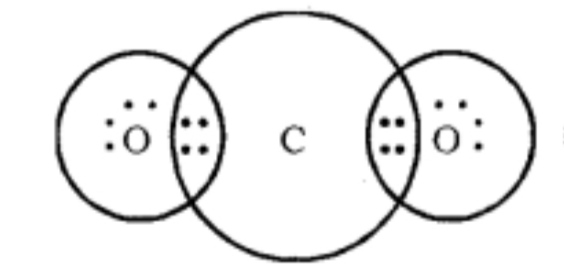
Formation of H2S Molecule
Atomic number of Sulphur = 16 (2, 8, 6)
Number of valence electrons = 6
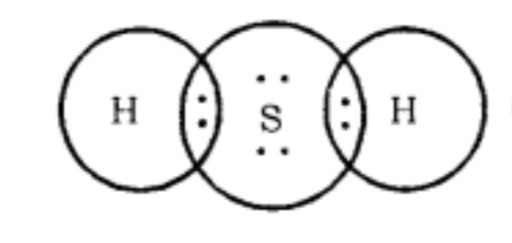
Physical Properties of Organic Compounds:
Most of the organic compounds have low boiling and melting point, due to the weak force of attraction (i.e., the inter-molecular force of attraction) between these molecules.
Most carbon compounds are poor conductors of electricity, due to the absence of free electrons and free ions.
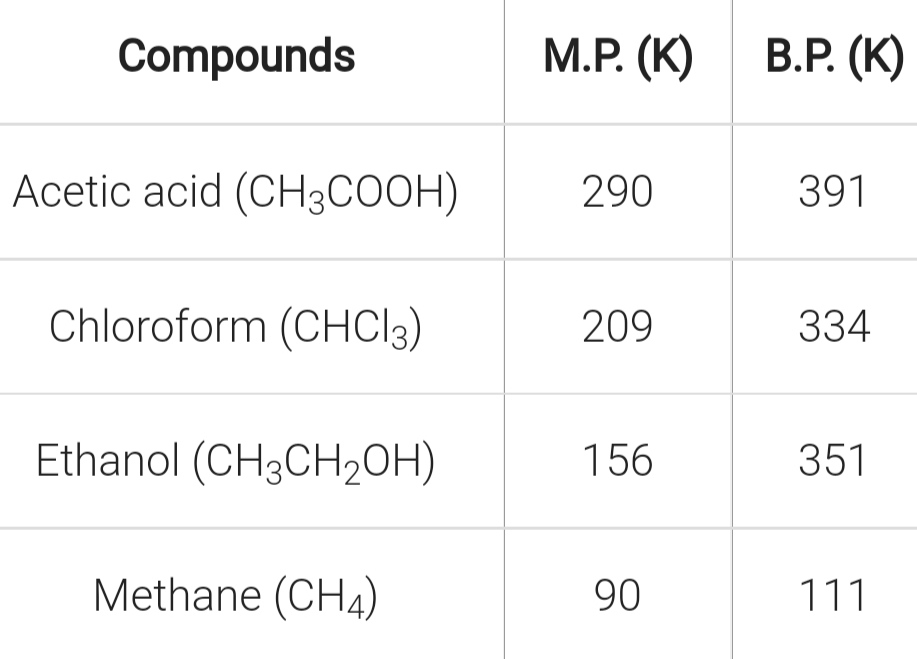
Allotropes of Carbon:
Allotropy: The phenomenon in which the element exists in two or more different physical states with similar chemical properties are called Allotropy.
Carbon has Three Main Allotropes
Diamond: In this, carbon, an atom is bonded to four other atoms of carbon forming three-dimensional structures. It is the hardest substance and an insulator. It is used for drilling rocks and cutting. It is also used for making jewellery.
Graphite: In this, each carbon atom is bonded to three other carbon atoms. It is a good conductor of electricity and used as a lubricant.
Buckminster Fullerene: It is an allotrope of the carbon-containing cluster of 60 carbon atoms joined together to form spherical molecules. It is dark solid at room temperature.
Versatile Nature of Carbon: The existence of such a large number of organic compounds is due to the following nature of carbon catenation .
*Catenation
*Tetravalent nature.
(i) Catenation: The self linking property of an element mainly carbon atom through covalent bonds to form long straight, branched and rings of different sizes are called Catenation.
- The small size of the carbon atom.
- The great strength of the carbon-carbon bond.
Carbon can also form stable multiple bonds (double or triple) with itself and with the atoms of other elements.
Straight Chain.

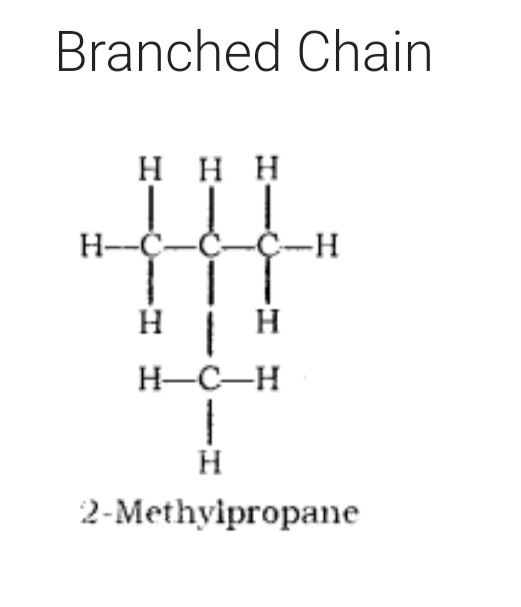

(ii) Tetravalent Nature: Carbon has valency of four. It is capable of bonding with four other atoms of carbon or some other heteroatoms with single covalent bond as well as double or triple bond.

Hydrocarbons: Compounds of carbon and hydrogen are known as hydrocarbons.
For example; Methane (CH4), Ethane (C2H6), Ethene (C2H4), Ethyne (C2H2) etc.
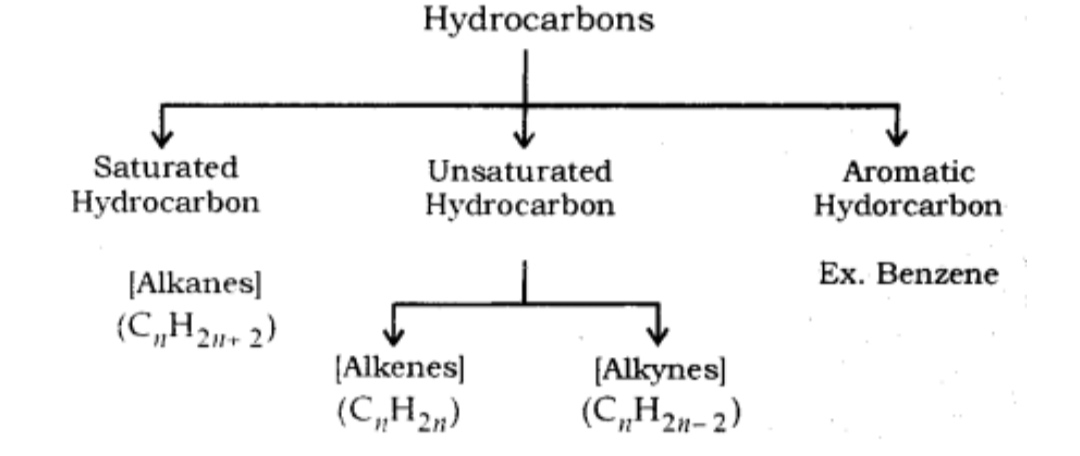
Saturated Hydrocarbon (Alkanes): General formula is CnH2n+2.
n = number of carbon atoms.
In this, the carbon atoms are connected by only a single bond.
For example; Methane (CH4), Ethane (C2H6) etc.

Unsaturated Hydrocarbons
Alkenes: General formula is CnH2n, where n = number of carbon atoms.
In this, the two carbon atoms are connected by double bond.

Alkynes: General formula is CnH2n-2, where n = number of carbon atoms. In this, the two carbon atoms are connected by triple bond.

Electron Dot Structure of Hydrocarbons.
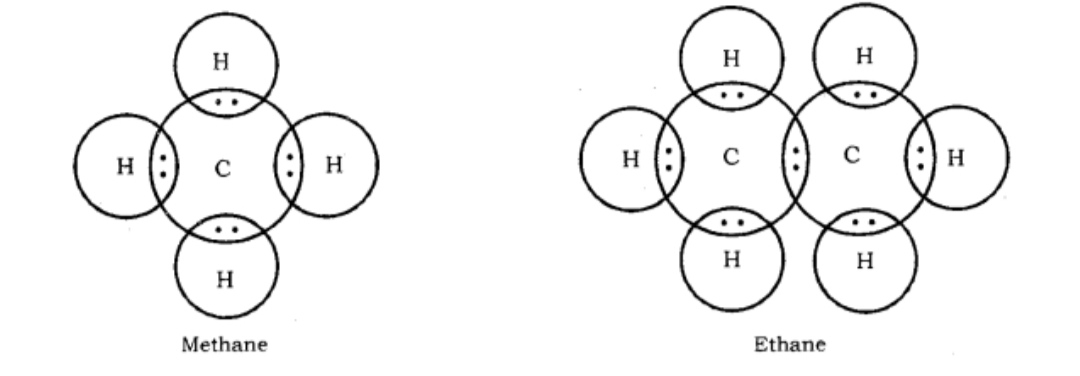
Isomerism: Compounds having the same molecular formula but different structural formula and properties are known as Isomers and this phenomenon is known as Isomerism.
Structural Isomerism: Compounds having the same molecular formula but different structures are called Structural isomers. Example: Isomers of butane (C4H10).
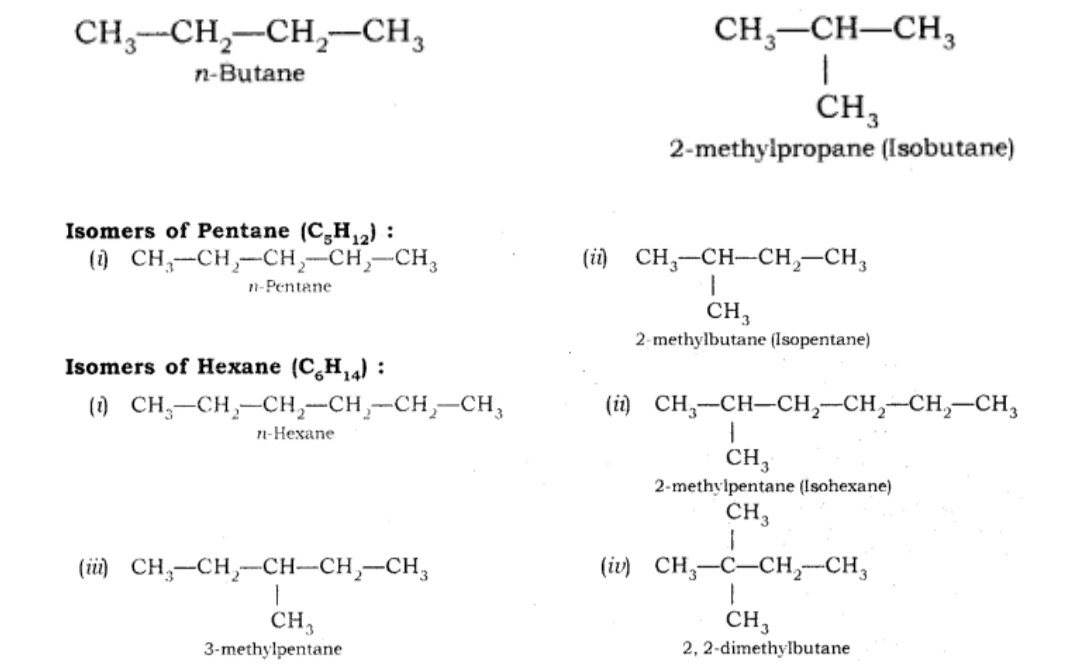
Homologous Series: Series of organic compounds having the same functional group and chemical properties and successive members differ by a CH2 unit or 14 mass units are known as Homologous series.
Homologous series of Alkanes, Alkenes and Alkynes
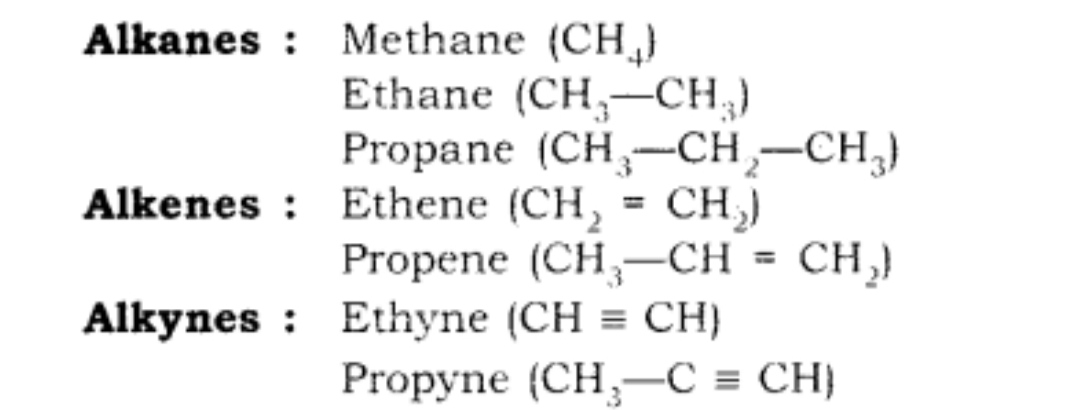
Characteristic of Homologous Series
*The successive members in homologous series differ by CH2 unit or 14 mass unit.
*Members of given homologous series have the same functional group.
*All the members of homologous series shows similar chemical properties.
Functional Group: An atom or group of atoms present in a molecule which largely determines its chemical properties are called Functional Group.
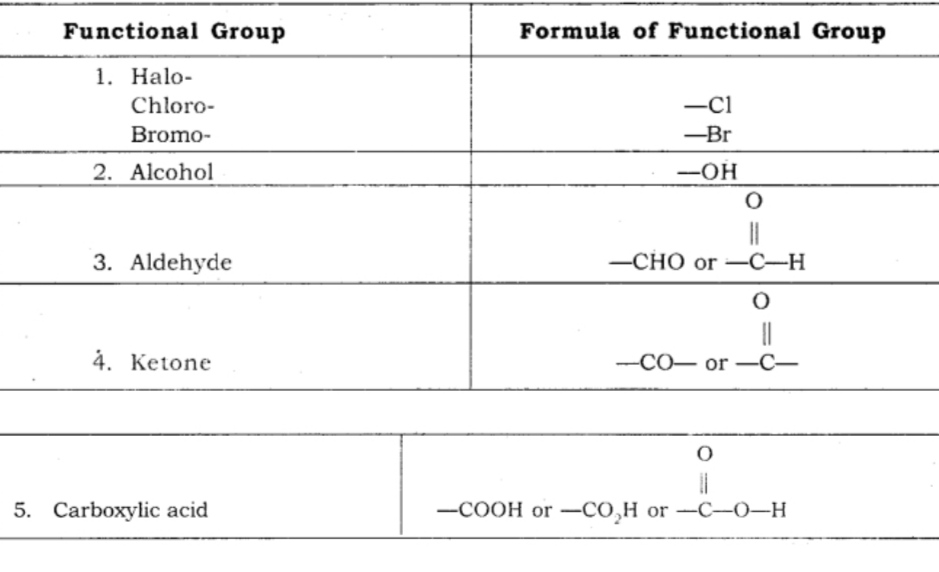
Nomenclature of Organic Compounds: It is difficult to remember millions of compounds by their individual common name. Thus, to systematize the nomenclature of organic compounds IUPAC (International Union of Pure and Applied Chemistry) has given certain rule which is as follows:
1. Identify the Number of Carbon Atoms in the Compound
Chemical Properties of Carbon
Compounds: The important chemical properties are as follows:
1. Combustion: The complete combustion of carbon compounds in the air gives carbon dioxide water, heat and light.
CH3CH2OH(l) + O2(g) → CO2(g) + H2O(l) + Heat and light
Carbon burns in air or oxygen to give carbon dioxide and heat and light.
The gas and kerosene stove used at home has inlet for air so that, burnt to given clean blue flame.
Due to presence of small a
2. Oxidation: Oxidation of ethanol in presence of oxidizing agents gives ethanoic acid.
Oxidizing Agent: Some substances are capable of adding oxygen to others, are known as Oxidising Agent.
Example: Alkaline KMnO4 (or KMnO4—KOH)
Acidified K2Cr2O7 (or K2Cr2O7—H2SO4)
KMnO4 – Potassium permanganate
K2Cr2O7 – Potassium dichromate
3. Addition Reaction: Addition of dihydrogen with unsaturated hydrocarbon in the presence of catalysts such as nickel or platinum or palladium are known as Hydrogenation (addition) reaction.

